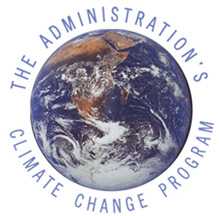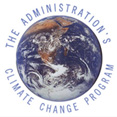 |
 |
New Evidence Helps Reconcile
Global Warming Discrepancies;
Confirms That Earth's Surface Temperature Is Rising
|
January 12, 2000
WASHINGTON -- Despite differences in temperature data, strong evidence exists to show that the warming of the Earth's surface is "undoubtedly real," and that surface temperatures in the past two decades have risen at a rate substantially greater than average for the past 100 years, says a new report by the National Research Council of the National Academies. The report examines the apparent conflict between surface temperature and upper-air temperature, which has led to the controversy over whether global warming is actually occurring. The Earth's surface temperature has risen about 0.4 to 0.8 degrees Celsius - or 0.7 to 1.4 degrees Fahrenheit -- in the last century, the report says. But data collected by satellites and balloon-borne instruments since 1979 indicate little if any warming of the low- to mid-troposphere - the atmospheric layer extending up to about 5 miles from the Earth's surface. Climate models generally predict that temperatures should increase in the upper air as well as at the surface if increased concentrations of greenhouse gases are causing the warming. "The differences between the surface and upper-air trends in no way invalidates the conclusion that the Earth's temperature is rising," said John M. Wallace, chair of the panel that wrote the report and professor of atmospheric sciences at the University of Washington in Seattle. "But the rapid increase in the Earth's surface temperature over the past 20 years is not necessarily representative of how the atmosphere is responding to long-term, human-induced changes, such as increasing amounts of carbon dioxide and other 'greenhouse' gases. The nations of the world should develop an improved climate monitoring system to resolve uncertainties in the data and provide policy-makers with the best available information." While a combination of human activities and natural causes has contributed to rising surface temperatures, other human and natural forces may actually have cooled the upper atmosphere. For example, natural events such as the eruption of Mt. Pinatubo in 1991 tended to decrease atmospheric temperature for several years. And burning coal and oil for energy produces tiny aerosol particles in the atmosphere that can have a cooling effect. Upper-air temperatures also can be reduced by depletion of ozone in the stratosphere caused by chlorofluorocarbons and other chemicals being emitted into the atmosphere. When these variables are accounted for in atmospheric models, satellite and balloon data more closely align with surface-temperature observations. Because global warming is a long-term process that can be masked by year-to-year climate variability, warming trends are most clearly revealed by surface temperature measurements - which have been recorded daily at hundreds of locations for more than a century. These data indicate that the Earth is, in fact, warming, the panel said. Satellites have been collecting data from the upper atmosphere for only about 20 years. The differences between surface temperature and upper-air temperature records also may be partially attributed to uncertainties in temperature measurements, the panel said. A better climate monitoring system is needed to ensure continuity and quality in data collection. Measurements should include not only temperature and wind, but also ozone, water vapor, clouds, and aerosols. Scientists need to perform a more comprehensive analysis of the uncertainties in surface, balloon, and satellite temperature data. Natural as well as human-induced changes should be accounted for in model simulations of atmospheric temperature variability. Data also need to be accessible in a form that enables a number of different research groups to use and improve them, the report says. To ensure access, data should be available in electronic databases to the entire scientific community. The study was funded by the National Oceanic and Atmospheric Administration and the Aluminum Corporation of America. The National Research Council is the principal operating agency of the National Academy of Sciences and the National Academy of Engineering. It is a private, nonprofit institution that provides science advice under a congressional charter.
|

![]()